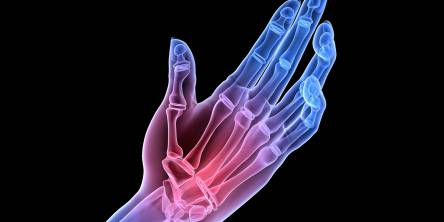Top Myths About Spine Surgery

Mr. Singh had been a very active and cheerful person. But his life changed when he started having some difficulty in walking and pain in legs on walking. After walking a few hundred meters, he would easily get tired and his legs would start feeling heavy. He would also have tingling and numbness, which, along with leg pain had made his life miserable. As time passed on he would start having these symptoms even after taking a few steps. Going to the washroom had also become difficult. He was increasingly becoming dependent on his family members when he finally decided to take care of his problems and visited a doctor. He was advised a few tests and MRI of the lumbar spine. Mr. Singh was diagnosed with Lumbar canal stenosis, a condition which is quite common in the elderly. The spinal canal becomes abnormally narrow which causes pressure on the nerve roots in the spinal canal.
He was advised a surgery for decompressing the nerve roots. He found about minimally invasive surgery for lumbar spinal stenosis. Although he was quite skeptical about the results of spine surgery, but he finally decided to go ahead, considering his sufferings had crossed the limits. To his surprise, after surgery, his world had changed drastically. He had never expected to be out of bed so soon. He could walk and could again feel the nimbleness in his feet. The pain was minimal and he had a smile back on his face. The incision was not more than an inch, and there were no stitches visible outside. His recovery was wonderful and he again started doing his five-mile walk within three months of surgery.
Even though he is doing great, he still has regrets. Why did he not go to a doctor earlier? He had heard of so many failed spine surgeries, that he was too afraid to visit a doctor. He had known a few patients who became miserable after a spine surgery, either from persistent pain or being bedridden forever.
Spine surgery, over the last decades, has made significant strides in safety and outcomes. The results of surgery are not the same as before. So why is there so much of fear of spine surgery? This is because of poor back pain awareness campaigns, about spinal conditions and options of treatment. A few back pain patients require surgery, and surgery is mostly for patients with some correctable pathology or after failed conservative therapies. With the recent advances in spine surgery techniques like minimally invasive or keyhole spine surgeries, use of microscopes(Lumbar microdiscectomy), better instrumentations, better pain analgesics, improvement in rehabilitation, the mental and physical trauma of recovering from a spine surgery has also reduced drastically.
So here are the top myths about spine surgery that scares patients.
Myth 1: Spine surgeries have bad outcomes, or surgery is going to make me worse.
Fact: Spine surgeries have become very safe and the results are comparable to any other surgeries. Less than 5% of patients experience recurring symptoms or symptoms bad enough to require further treatment.
Myth 2: Back pain does not improve
Fact: Finding the right cause of back pain is important. Most back pains improve with correct diagnosis and treatment. The success of spine surgery depends upon the indication for surgery and the correlation with the radiological findings.
Myth 3: Back pain does not improve without surgery
Fact: This is also not true as sometimes, back pain can have a very simple answer like physiotherapy. Sometimes, it needs a bit of lifestyle alteration to be pain-free.
Myth 4: Osteoporosis associated spine fractures are untreatable
Fact: Osteoporotic spine fractures are also amenable to minimally invasive surgeries like Vertebroplasty and Kyphoplasty. Osteoporotic spine fractures are also now associated with speedy recovery.
Disclaimer: This article is meant for general awareness and can not substitute expert medical advice. Please consult a qualified doctor near you.
Similar Articles
Veins on the skin that produce swelling may indicate varicose veins. Varicose veins are a vein disorder, and their role is to return blood from the leg to the heart. The specific cause of varicose veins, a prevalent condition, is unknown.
A healthy spine is the foundation of a functioning body. It supports your frame while allowing you to bend, flex, and move more freely. However, most people neglect the importance of spine health until they have a back condition.
Whether you're having trouble moving body parts or experiencing worsening joint discomfort, an orthopedic doctor can help. They can treat anything from a minor strain to complex treatments such as shoulder replacement. The appropriate treatment from an orthopedic expert at the right time might relieve your pain and improve your symptoms in less time.
When it comes to trauma, professionals in the mental health sector readily admit that no single style of therapy or intervention is appropriate for every case or individual.
Rheumatoid arthritis (RA) is a type of autoimmune disease that occurs when the body's immune system attacks the lining of joints, causing inflammation and causing symptoms like pain and stiffness. RA usually affects both sides of the body in a similar way, but small joints of the hands and feet are often affected first, often knuckle joints of the fingers.
An electroencephalogram (EEG) is a test that measures the electrical activity in the brain. Healthcare experts utilize it to evaluate and comprehend neurological illnesses, sleep disorders, and brain damage.
So, your back decided to stage a mutiny and gift you with a herniated disc. Lovely. Now what? If you’re imagining a future filled with endless discomfort and groaning every time you get out of bed, don’t fret. There are plenty of ways to tackle a herniated disc and get back to living your best, pain-free life.
Back pain – it’s not just a matter of “I lifted a heavy box, and now my back hurts.” It’s often the result of a complex dance between our minds and bodies, with stress, anxiety, and emotions playing lead roles. If you’ve ever woken up with a stiff back after a tough week or felt your spine twinge just from reading a long email chain, you’re not alone.
Chronic pain is a medical problem that affects many people around the world. Unlike acute pain, which is a short-term response of the body to tissue damage, chronic pain lasts longer, often without obvious physical damage. It can last from several months to several years, and its consequences can affect all aspects of a person's life









